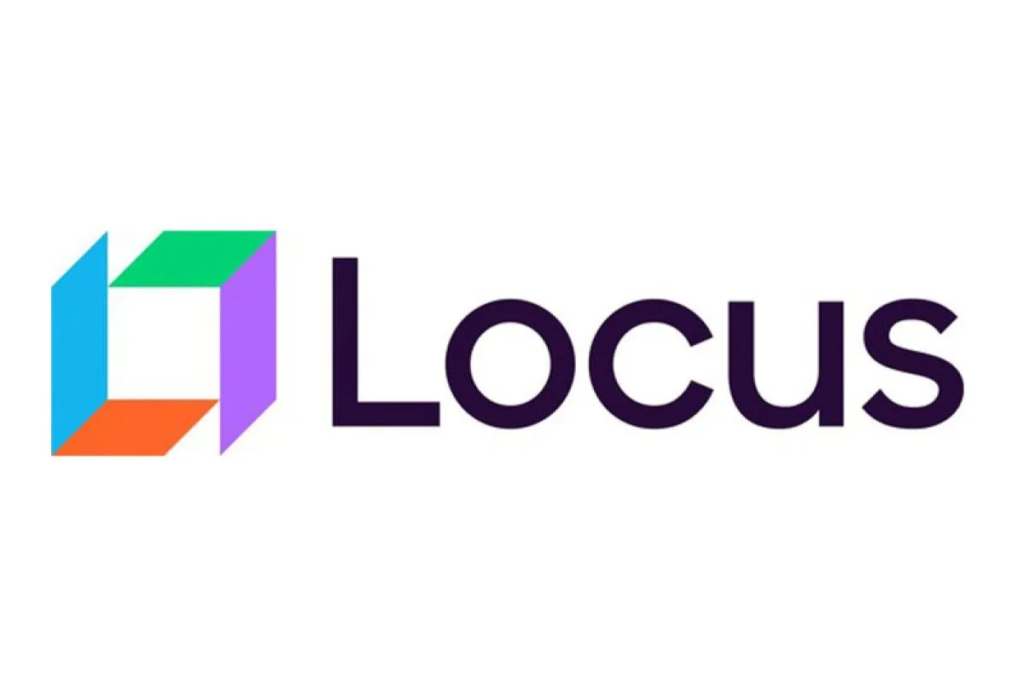In 2026, The rise of eCommerce, on-demand logistics, and instant delivery has made last-mile execution a competitive advantage. Businesses need end-to-end visibility and AI-led automation to meet strict SLAs, manage costs, and minimize human error. Delivery speed and reliability are no longer optional, they define customer loyalty. Businesses that still rely on manual dispatching or disconnected tracking systems risk delays, rising costs, and lost trust.
Delivery Management Software (DMS) brings structure, visibility, and intelligence to logistics operations transforming delivery chaos into a unified, data-driven process optimized for efficiency and growth.
What is Delivery Management?
Delivery management is the systematic control of order dispatch, tracking, and delivery confirmation using digital tools. It automates how businesses plan routes, assign drivers, and monitor operations in real time. delivery management helps businesses fulfill every order efficiently, keeping customers informed and satisfied while maintaining profitability.

Key Features in Real-Time Delivery Management System
- Automated Delivery Scheduling
AI-driven automation assigns orders to the most suitable drivers based on distance, load capacity, and location density. It removes manual effort, reduces time, and maximizes the vehicle usage. Automated scheduling ensures faster fulfillment while improving overall fleet productivity helping businesses deliver more orders using fewer resources. - Route Optimization & Real-Time Tracking
Intelligent routing engines cover live traffic, weather, and delivery density to plan the most optimized routes. GPS-based real-time tracking offers visibility to both customers and managers, ensuring proactive communication and reducing missed deliveries. This feature saves fuel, cuts costs, and strengthens SLA compliance across fleets. - Reports, Analytics & Insights
Performance dashboards provide actionable metrics like delivery speed, SLA adherence, cost-per-delivery, and driver efficiency. Predictive analytics highlight the potential bottlenecks and share insights to empower operations teams to make smarter, data-backed decisions that continuously improve logistics performance. - Integrations & White-Labeling
Modern DMS integrates seamlessly with ERP, CRM, and eCommerce systems for real-time synchronization. White-label capabilities allow 3PLs and enterprises to customize interfaces and notifications under their brand and maintaining a consistent identity while using enterprise-grade technology. - e-PoD & Notifications
Electronic-proof-of-delivery captures digital signatures, photos, and timestamps, replacing paper-based validation. Automated SMS or WhatsApp updates and keep customers informed throughout the journey. This combination improves transparency, reduces disputes, and enhances the delivery experience for both senders and recipients.
What Benefits Should the Best Delivery Management Software in 2026 Offer?
- Operational Efficiency
By automating dispatching and route planning, businesses can handle more orders with less resources. It streamlines processes, cuts human errors, and keeps deliveries on schedule – boosting both performance and employee productivity. - Cost Savings
Route optimization, better capacity utilization, and reduced idle time help save 25–30% in operational costs. Over time, these savings improve profit margins and enable businesses to scale sustainably without compromising quality. - Customer Experience
Real-time tracking, accurate ETAs, and proactive communication foster transparency and trust. Enhanced delivery visibility leads to fewer customer complaints and higher satisfaction scores turning fulfillment into a brand differentiator. - Compliance
Intelligent routing reduces carbon footprint, and digital proof systems minimize paper waste. Leading DMS tools comply with India’s compliance documents like Incorporation, GST, GDPR, and data security standards ensuring environmentally responsible and regulation-ready logistics.
How Can a Delivery Management System Help You Take Control of Logistics?
Centralized Visibility
A unified command center dashboard displays real-time status of every driver, delivery status, and partner across your entire network. This complete visibility offers unmatched control over operations, inefficiencies, and allows immediate intervention when issues arise. Operations teams can monitor fleet performance, track SLA compliance, and manage exceptions from one centralized platform.
Smart Allocation
Orders are automatically assigned using intelligent algorithms that consider driver proximity, current workload, vehicle capacity, and delivery priority. This smart allocation reduces empty vehicle runs, balances workload distribution, ensures optimal resource utilization, and accelerates fulfillment speeds. The system continuously learns and improves allocation accuracy based on historical performance data.
Predictive Performance and Analytics
Machine learning models analyze historical delivery data, traffic patterns, seasonal trends, and operational metrics to forecast potential delays and demand surges. These predictive insights enable proactive fleet adjustments, preventive maintenance scheduling, and strategic capacity planning. Operations managers can address issues before they impact service levels, maintaining consistently high performance standards.
Customer Transparency
Bidirectional communication channels and automated status notifications eliminate customer confusion and reduce support inquiries. Customers stay informed at every delivery stage with real-time updates, accurate ETAs, and instant access to driver location. This transparency builds trust, reduces failed deliveries, improves customer satisfaction scores, and decreases the burden on customer service teams.
Data-Driven Growth
Continuous performance monitoring and comprehensive reporting convert complex logistics operations into clear, measurable KPIs. Advanced analytics reveal optimization opportunities, identify cost reduction areas, and highlight growth potential. This data-driven approach transforms logistics from a cost center into a strategic competitive advantage that drives business growth and operational excellence.
Best 5 Delivery Management Software in India
Pidge

Founded in 2019 by Ratnesh Verma and Rushil Mohan, Pidge is a Gurugram-based AI-powered logistic intelligence platform that has rapidly emerged as a leading solution for complex logistics orchestration for hyperlocal. Pidge specializes in hybrid delivery models, hyperlocal fulfillment, and enterprise-scale orchestration across multiple cities and delivery partners. The platform serves enterprises, D2C brands, and logistics providers who require sophisticated multi-partner coordination, real-time visibility, and automated decision-making.
Key Features:
- TITAN AI Allocation Engine: Proprietary AI system that intelligently distributes orders across multiple delivery partners based on real-time capacity, location, and performance metrics
- Multi-Partner Orchestration: Seamlessly manage 1PL, 3PL, and on-demand delivery networks from a single unified platform with automated partner selection and load balancing
- Advanced Route Optimization: Dynamic routing algorithms that continuously adjust delivery paths based on real-time traffic, weather conditions, and order priorities
- Real-Time Tracking & Visibility: GPS-enabled live tracking with customer-facing interfaces and operations dashboards for complete supply chain transparency
- Electronic Proof of Delivery (e-PoD): Digital signature capture, photographic evidence, and timestamp verification for paperless delivery confirmation
- Comprehensive Analytics Dashboard: Deep performance insights including SLA adherence, cost-per-delivery, partner performance, and predictive analytics for operational optimization
ClickPost

Established in 2015 by Naman Vijay and Prashant Gupta, ClickPost has positioned itself as a specialized logistics intelligence platform focused on post-purchase customer experience and carrier management. The platform is particularly strong for eCommerce brands, D2C companies, and online retailers who need sophisticated tracking, returns management, and delivery intelligence capabilities.
Key Features:
- Intelligent Carrier Allocation API: Automated carrier selection based on serviceability, cost, performance history, and delivery speed requirements
- Advanced Returns Management: End-to-end returns workflow automation including quality checks, refund processing, and reverse logistics optimization
- Branded Tracking Pages: Fully customizable tracking interfaces that maintain brand identity and provide upselling opportunities during shipment tracking
- Proactive Delay Alerts: AI-powered exception detection that identifies potential delivery delays and automatically triggers customer notifications
- RTO Reduction Engine: Machine learning models that predict and prevent failed deliveries through address verification and customer communication
Locus

Founded in 2015 by Nishith Rastogi and Geet Garg, Locus is a Bengaluru-based enterprise logistics optimization platform that delivers sophisticated solutions for large-scale operations. The platform specializes in serving FMCG giants, retail chains, 3PL enterprises, and e-commerce companies managing complex multi-route, multi-fleet, and multi-city logistics networks.
Key Features:
- Dynamic Route Optimization: Industry-leading algorithms that optimize routes considering multiple constraints including time windows, vehicle capacity, driver skills, and customer preferences
- Automated Dispatch Management: Intelligent order assignment system that automatically allocates deliveries based on real-time driver availability, location, and workload balancing
- Live Control Tower: Centralized command center with real-time visibility across entire fleet operations, enabling instant decision-making and exception management
- ESG & Emissions Tracking: Comprehensive sustainability monitoring including carbon footprint calculation, fuel consumption tracking, and environmental impact reporting
- Smart Rider Reassignment: AI-powered dynamic reallocation that moves orders between drivers in real-time to optimize efficiency during unexpected situations
Shipsy

Established in June 2015 by Soham Chokshi, Dhruv Agrawal, Himanshu Gupta, and Sahil Arora, Shipsy provides comprehensive end-to-end supply chain visibility and automation for large-scale logistics operations. The platform is particularly strong for 3PL providers, freight forwarders, and enterprises requiring multi-modal transportation management across first-mile, mid-mile, and last-mile operations.
Key Features:
- Multi-Carrier Optimization: Intelligent carrier selection and load planning across multiple transportation partners with automated cost and service level balancing
- Global Shipment Tracking: Unified tracking interface for domestic and international shipments across all transportation modes with real-time status updates
- AI-Powered Transportation Management: Machine learning algorithms that optimize freight planning, vehicle utilization, and route efficiency across complex networks
- Freight Visibility Platform: End-to-end transparency for B2B shipments including container tracking, milestone alerts, and exception management
Tookan by JungleWorks

Launched in May 2015 by Samar Singla as part of the comprehensive JungleWorks product suite, Tookan is specifically designed for small and mid-sized on-demand businesses seeking affordable, scalable delivery management solutions. The platform is ideal for food delivery services, grocery delivery startups, courier companies, and hyperlocal services that need quick deployment without extensive technical resources.
Key Features:
- Auto-Dispatching System: Automated order assignment based on driver proximity, availability, and workload with configurable allocation rules
- Route Optimization Engine: Efficient multi-stop route planning that reduces delivery time and fuel costs with real-time traffic consideration
- Dedicated Agent Mobile App: Feature-rich driver application with turn-by-turn navigation, task management, e-PoD capture, and offline functionality
- White-Label Interface: Fully customizable customer-facing tracking pages and mobile apps that maintain your brand identity throughout delivery experience
- Customer Tracking Links: Real-time tracking URLs shared via SMS enabling customers to monitor delivery progress without app installation
How Would an Agile Delivery Manager Select the Best Software for Delivery?
Define Operations
Begin by clearly identifying your specific delivery model including last-mile urban delivery, intercity logistics, or hyperlocal on-demand fulfillment. Analyze your operational scale, average daily order volumes, delivery geography, and fleet composition. Select software that aligns precisely with your business model, whether you’re managing proprietary fleets, coordinating third-party partners, or operating hybrid delivery networks.
Prioritize Core Features
Focus on essential capabilities that directly impact operational success including intelligent automation, real-time GPS tracking, comprehensive analytics dashboards, and electronic proof of delivery. Evaluate route optimization quality, dispatch automation sophistication, and reporting depth. Ensure the platform offers mobile applications for drivers, customer tracking interfaces, and exception management tools that match your operational requirements.
Check Scalability
Rigorously assess the platform’s ability to support business growth without performance degradation or system limitations. Test whether the solution can seamlessly handle multi-city expansion, fleet size increases, additional delivery partner integrations, and order volume spikes. Verify that the architecture supports horizontal scaling, maintains response times under load, and offers flexible pricing models that grow with usage.
Verify Integration Capability
Examine the platform’s API ecosystem and pre-built integrations with critical business systems including ERP, CRM, WMS, and eCommerce platforms. Ensure seamless data synchronization capabilities that eliminate manual data entry and reduce errors. Check for webhook support, real-time data exchange protocols, and compatibility with your existing technology stack to ensure smooth implementation and operational continuity.
Evaluate Usability
Assess the user interface simplicity across web dashboards, mobile applications, and admin panels to ensure quick team adoption with minimal training investment. Test the intuitiveness of core workflows, quality of documentation, availability of localized language support, and responsiveness of customer service. Prioritize platforms offering implementation support, training resources, and ongoing technical assistance for operational success.
Conclusion
In 2026, operations teams have no room for uncertainty: whether you’re handling home-deliveries, expanding across cities, or orchestrating multi-partner logistics, speed, transparency, and intelligence are no longer optional, they’re prerequisite. The right delivery management software transforms your chain from fragmented and manual into connected, predictive, and resilient. Choose a platform that gives you full visibility, automates the heavy lifting, scales effortlessly, and aligns with your brand’s growth ambitions.



